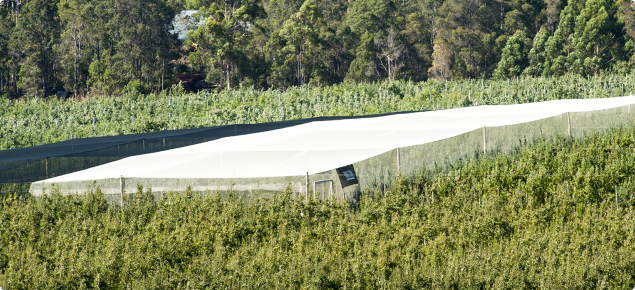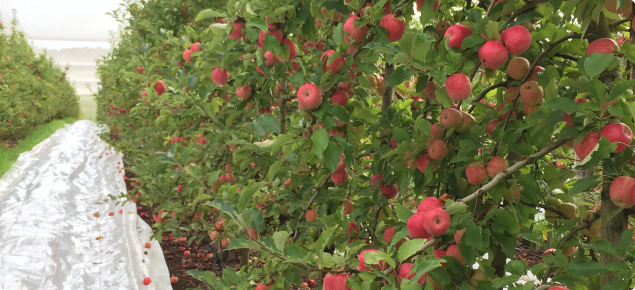Introduction
The final harvest of the netted apple demonstration site at the Lyster Orchard in Manjimup is complete. Established in October 2013, the demonstration aimed to show the value of netting to improve water use efficiency and productivity in high density orchard production systems.
The 1.2 hectare site has 0.5ha of permanent net constructed over an established Cripps Pink and Fuji orchard. Sections of black and white 16mm quad netting were installed, each covering 0.25ha. The remaining area contained two comparison blocks, a department-managed no netted area, and a grower practice no netted area as control treatments.
Particular attention was given to assessing the impact of netting on fruit quality parameters such as sunburn, blush and background colour development along with assessing bird and hail damage if recorded in the outside treatment. Water use was measured using water metres on individual lines within each treatment.
Demonstration treatments
Initially there were four treatments comparing, black, white and no net areas. One no net area was the control demonstration while the other no net area was current grower practice In response to high vigour and excessive sod culture in the first season a small test area using drip irrigation was installed either side of four rows of trees under the changeover from black and white net.
Significant reduction in water use in the second season and reduced vigour with no decrease in yield prompted the whole site to be converted to a single line of drip irrigation per row for the 2015-16 season. All irrigation was managed using a separate pump and irrigation controller reducing the number of treatments to three being:
- Black net, drip irrigation
- White net, drip irrigation
- No net, drip irrigation
The netted treatments consisted of four row of Cripps Pink, separated by two rows of Fuji between the next treatment. The remainder of the area became one single outside net treatment in the final year.
All thinning, pruning and tree management was undertaken as per normal practice by the Lysters. Nutrition was applied via a Dosatron positive displacement fertiliser injection system, as advised by the Lysters and their agronomist.
Harvest was undertaken on a commercial basis starting the last week of April and continuing through mid-May. The last fruit diameter measurement was taken for each treatment on 29 April.



